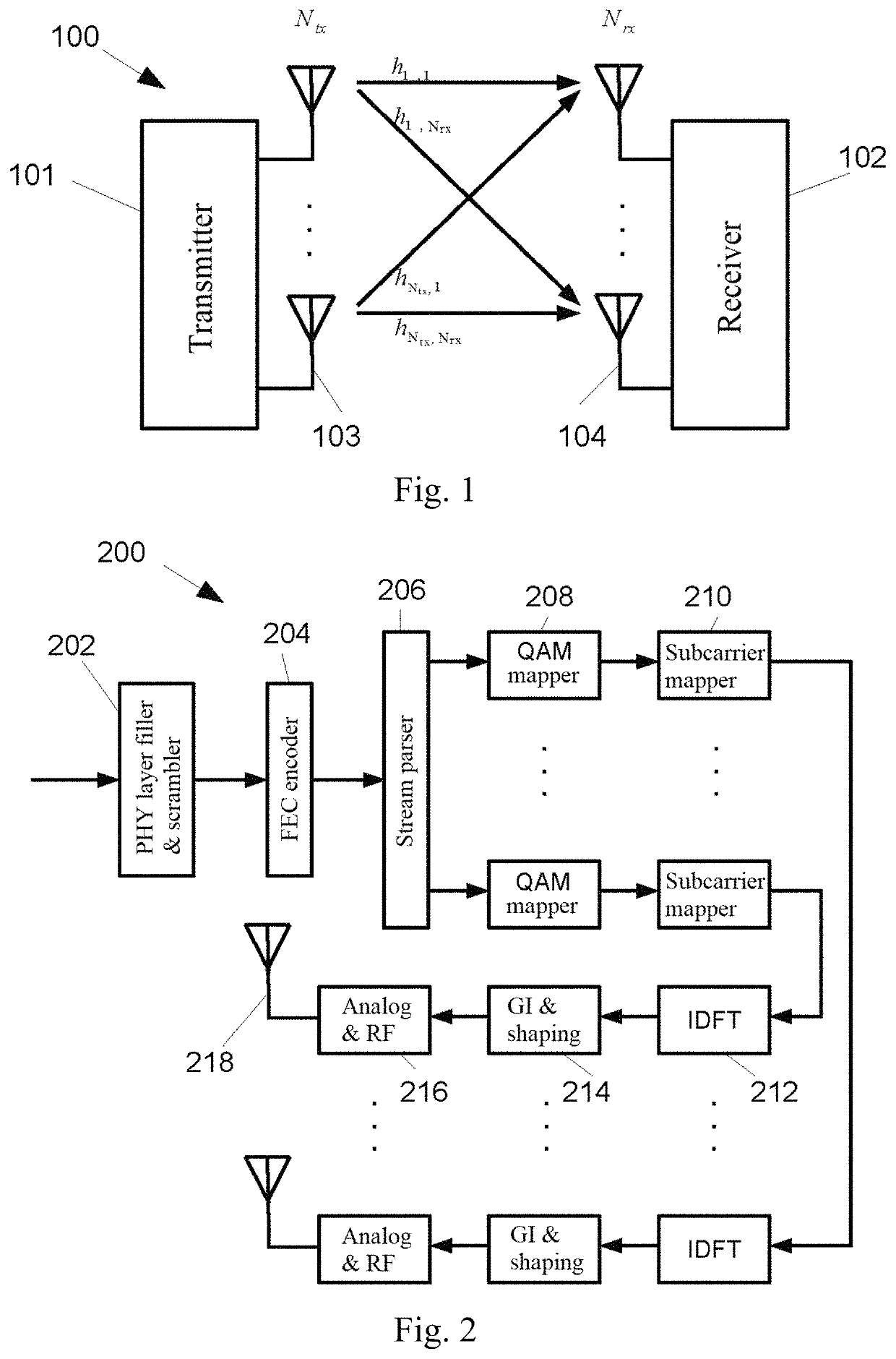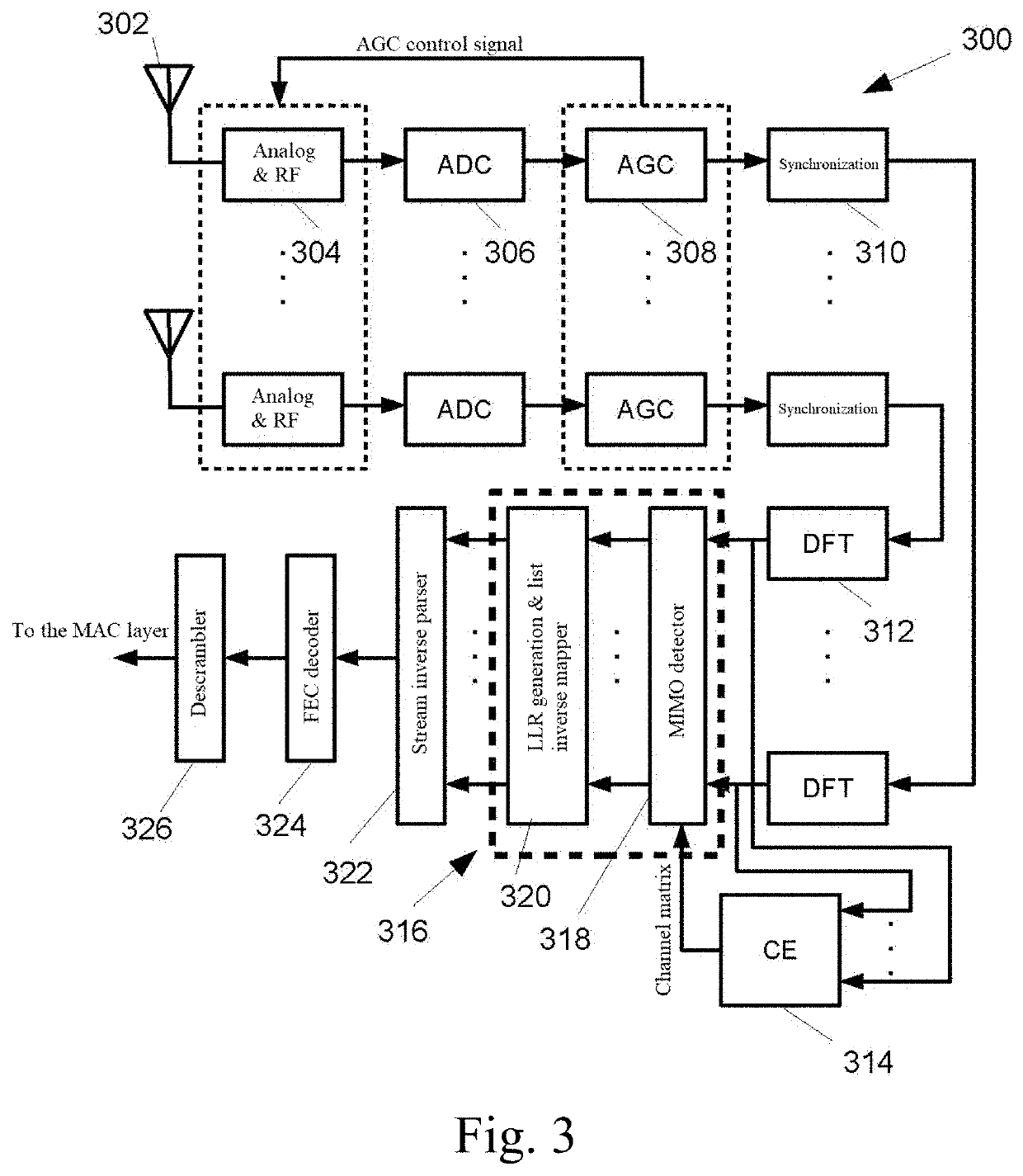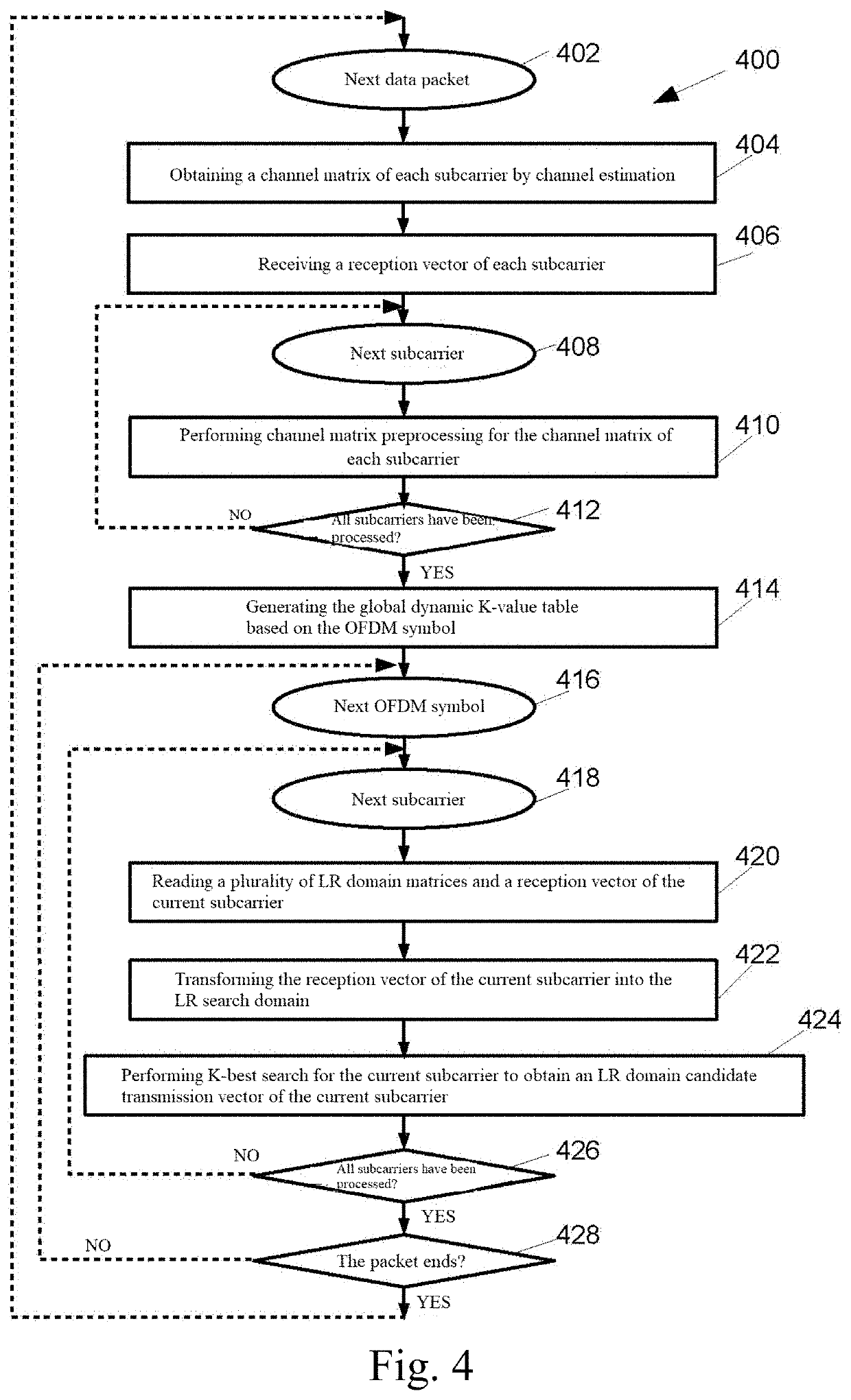MIMO-OFDM wireless signal detection method and system capable of channel matrix pre-processing during detection
a wireless signal and detection method technology, applied in multi-frequency code systems, baseband system details, transmission path division, etc., can solve the problems of inability to achieve optimal detection, poor bit error performance, and exponential increase in detection complexity, so as to achieve stable throughput and reduce the number of useless expansions , the effect of high search expansion efficiency
- Summary
- Abstract
- Description
- Claims
- Application Information
AI Technical Summary
Benefits of technology
Problems solved by technology
Method used
Image
Examples
embodiment 1
[0277]Global dynamic K-value allocation based on OFDM symbols.
[0278]After preprocessing of Nsd=48 channel matrices loaded with data in OFDM symbols is completed, a search range Lln of each search layer of each subcarrier can be determined. The total number of points in the search range is:
Lsum=Σn=1NsdΣl=1LLln.
[0279]If fine linear allocation is made, a global dynamic K-value of an lth layer of an nth subcarrier can be calculated as follows:
[0280]Kln=round[K·L·NsdLsum·Lln]
embodiment 2
[0281]Simple hierarchical (secondary) allocation.
[0282]Medians Lmid of all Lln are found and an offset Kδ
[0283]If Lln≥Lmid, then Kln=K+Kδ; If Llnmid, then Kln=K−Kδ
embodiment 3
[0284]Subcarriers are grouped and the K-value is dynamically allocated within the group.
[0285]For example, 48 subcarriers are divided into four groups, and the search resources in each group are allocated. If each subcarrier is a group, it is the aforementioned dynamic K-value allocation based on subcarriers.
PUM
 Login to View More
Login to View More Abstract
Description
Claims
Application Information
 Login to View More
Login to View More - R&D
- Intellectual Property
- Life Sciences
- Materials
- Tech Scout
- Unparalleled Data Quality
- Higher Quality Content
- 60% Fewer Hallucinations
Browse by: Latest US Patents, China's latest patents, Technical Efficacy Thesaurus, Application Domain, Technology Topic, Popular Technical Reports.
© 2025 PatSnap. All rights reserved.Legal|Privacy policy|Modern Slavery Act Transparency Statement|Sitemap|About US| Contact US: help@patsnap.com



